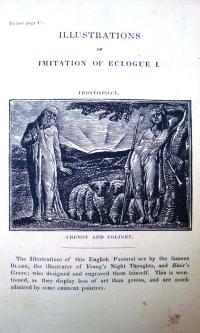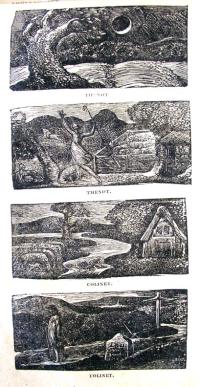Late in 1820 and early 1821, Blake put aside his own work to complete a commission for wood engravings to illustrate the third edition of Dr. Robert Thornton’s juvenile Virgil. Thornton claimed that his instructional volumes were meant to “enable youth to acquire ideas as well as words.” He had added a few illustrations to the Virgil second edition and sales were increased. Thornton hoped to build on this success with a fully illustrated edition.
Wood engraving was a new reproductive technique gaining in popularity for illustrating books and Blake, with no training or experience, was willing to try it. He made twenty drawings and from these, cut seventeen blocks illustrating Ambrose Philips’ Imitation of Eclogue, I (v. 1, p. 13-18). When they were delivered to the publisher, the blocks were rejected completely and Thornton was told that they should be completely recut. Happily, Thornton was persuaded by several other artists to keep Blake’s work but he did publish a caveat in his introduction, “The illustrations of this English Pastoral are by the famous Blake … They display less of art than of genius.” Three blocks were added, cut by an unidentified artist, clearly not equal to Blake.

